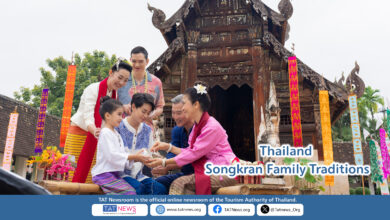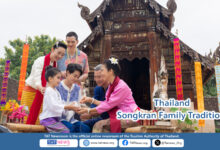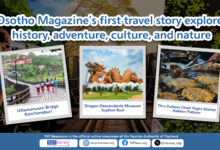But to Thais, coconuts are not a tropical treat, but an essential crop used by everyone from cooks to carpenters. The milk refreshes, the meat provides oil and the coir, or husk, provides essential fibre. Even the coconut palm’s leaves, trunks and roots have many uses. Indeed, without its coconuts and palms, Thailand’s people, food and culture would be very different.
So, let’s take a look at how the versatile coconut has shaped Thai culture.
From curries to cocktails
It’s as a food product that the Thai coconut is best known. Everyone who’s enjoyed a massaman curry or a tropical cocktail can testify to the richness of coconut milk. When young and tender, the fruit are served as snacks but as they age the meat within becomes thicker at which stage it is shredded for use in desserts with the sweet-toothed Thais mixing coconut with sugar and creating coconut flavoured jelly, pancakes and pastries. When coconuts are at their mature stage that they are most useful, the flesh is squeezed to extract oil or squeezed and blended with water to produce the coconut cream so essential in harmonizing flavours and ensuring that rich texture in Thai dishes.
Tropical beauty treatments
Thai beauty is famous and many of the kingdom’s age-old beauty secrets make use of coconuts and their milk. Thai women often enhance their hair with coconut oil, rubbed in as a conditioner that softens the hair and makes it shiny, thick and glossy. Easily absorbed, coconut oil is used as a body moisturiser which softens the skin and imparts a healthy glow. Oil even works on finger nails, making them shiny and strong. Some experts say that coconut oil can help fade stretch marks and it also makes an excellent makeup remover. In these days, when beauty treatments cost the earth, a coconut picked up for a few baht in any Thai market is a real beauty bargain.
Recipe for health
As Thai cuisine becomes ever more popular, scientists are often finding it has many health benefits, especially in coconut based dishes. There are no trans-fatty acids and the saturated fats are more easily digested than with other oils, meaning they’re less likely to make you fat. Coconut oil boasts anti-bacterial properties, protects against liver damage and improves the body’s anti-inflammatory response. Also, coconut milk, enjoyed as a refreshing drink, contains vitamins and sugar that are easily absorbed into the body, helping detoxify it and thus making coconut milk a favourite drink of sportspeople.
Coconuts in Thai culture
As you’d expect of a fruit that’s so abundant and useful, there are many cultural associations with coconuts in Thailand. Due to it its perceived purity, coconut milk is used to wash the faces of the dead as their bodies are prepared for funerals. This is to clear the dead person’s mind so they can peacefully travel to the next life. This purity also means that coconuts are given as offerings in Buddhist and Brahmin ceremonies. And few Thai houses are built without a coconut palm being planted in the eastern corner of the land to bring happiness to the family within.
Refreshing fruits with millions of uses
You can’t go far in Thailand without seeing coconuts or palms used in some way, the leaves are used to cover shelters, the shells make utensils and the trunks make furniture. Used husks are burnt for fuel and to keep mosquitoes at bay. In some parts of the kingdom, the coconut roots are still used for toothbrushes – little wonder that this versatile plant is known as the tree of life.
Coconuts in tourism
All tourists enjoy coconuts in one form or another when visiting Thailand, usually as part of a meal, dessert or cocktail. The versatile shells can be bought as souvenirs in the form of carved dolls, bowls and utensils. Coconut shells are also used to make one of Thailand’s most popular stringed instruments, the Saw-U and it’s believed that the rounder the coconut used, the better the sound.
These many uses of coconuts are now celebrated on Ko Phangan at the annual Colourmoon Festival, where locals meet to trade coconut recipes and products and to celebrate the unique local life of the island.






